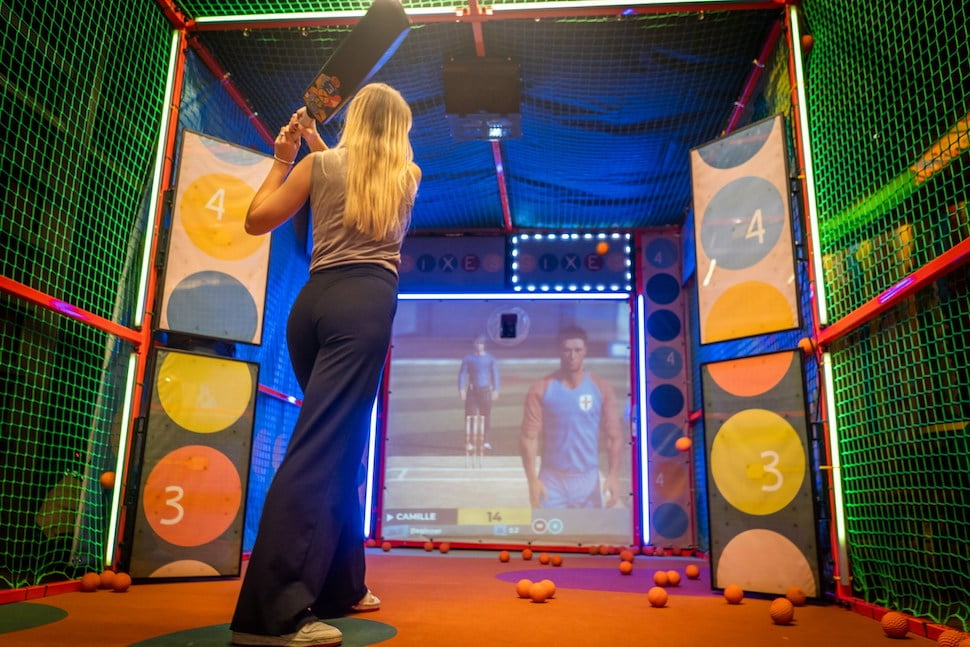The Rise of Sports Simulators in Entertainment

The world of entertainment is evolving fast, and engagement is the new currency. People no longer want to sit, watch, and sip; they want to do, engage, and connect. From rooftop bars to shopping centres, a new era of active socialising is taking over, one where sport and social life blend seamlessly.
At the centre of this movement are sports simulators: immersive, tech-powered experiences that turn casual nights out into moments of play. Once reserved for elite athlete training, sports simulators and technology are now the beating heart of modern entertainment venues, redefining what it means to have fun together. Whether it’s a group of friends facing off at TopGolf, teammates celebrating goals at Toca Social, or families batting it out at Sixes Social Cricket, the formula is simple: movement and connection.
From Living Rooms to Leisure Destinations
What began as single-sport simulators in training academies has evolved into vibrant, multi-sport experiences in entertainment venues worldwide. Golf simulators led the charge, turning a traditionally elite sport into an accessible, social activity. Concepts like TopGolf have shown how gamified experiences can turn hitting a few golf balls into an evening of fun, food, and friendly competition.
Following this trend, Toca Social (football), Sixes Social Cricket, Sluggers (Baseball), and Flight Club (Darts), to name a few, have built thriving venues where friends gather to play, eat, and connect, blurring the line between bar, restaurant, and sports arena. These spaces are the new-age playgrounds for adults, offering the thrill of competition without the pressure of performance. The best part of all is that they democratize participation.

Multi-Sport, Multi-Generational Appeal
Modern sports simulators in entertainment venues go beyond golf. Multi-sport systems now include cricket, baseball, tennis, and even lacrosse, appealing to fans of all backgrounds.
Technological advancements like high-speed cameras, AI-based tracking, and immersive visuals allow players to experience hyper-realistic gameplay. The result? A deeply engaging, data-rich experience that makes sport inclusive and fun for everyone, from kids discovering their swing to adults reliving childhood passions.
The Social Fitness Revolution
Beyond fun, these simulators are also driving the active socialising movement, blending physical activity with social entertainment. In a world increasingly dominated by screens, this hybrid format promotes movement, teamwork, and laughter. It’s the reason why venues like TopGolf, Toca Social, and Sixes are packed week after week, attracting both corporate groups and casual visitors seeking something more engaging than dinner and drinks.
Even brands are joining in. Global events, fan zones, and pop-ups now use portable simulators to bring sports to unexpected places, from shopping malls to festivals, creating memorable experiences that connect people with sport. For example, the recent T20 World Cup in the USA saw mega activations with AR and VR Sports Simulator-driven activations in prime locations of Manhattan, while mega Tennis events like Wimbledon and Australian Open have features and simulator activations to drive casual fans into participants.

A New Era of Immersive Play
The modern audience is driven by the thrill of shared experiences rather than static consumption. Add to that the rise in disposable income, flexible lifestyles, and a growing emphasis on wellness and activity and it’s easy to see why sports simulators are becoming the centerpiece of a new kind of entertainment.
At the same time, technology has matured to meet this demand. High-speed sensors, AI analytics, and hyper-realistic visuals have made virtual play indistinguishable from real sport. Today, you can step into a batting cage in London and challenge a friend from Melbourne or compete with friends across the world in a digital golf showdown. It’s a seamless blend of physical engagement and digital immersion that traditional forms of leisure simply can’t match.
Technology Leading the Charge
What makes tech-driven sports experiences so powerful, though, is their ability to evolve. Just like the apps on your phone, these simulators are software-led and constantly updated with new game modes, difficulty levels, and visuals that keep players coming back. This adaptability gives venues a dynamic edge, allowing them to refresh experiences without major reinvestment. For players, it means every visit feels new, a fresh challenge, a different sport, a new story to share.
Whether it’s a night out, a corporate team-building session, or a weekend family activity, sports simulators in entertainment are rewriting the rules of recreation. They represent a future where technology doesn’t isolate, it connects. A future where we don’t just watch sport, we live it.
FAQs
1. What are sports simulators in entertainment?
They are interactive systems that let users play real sports (like cricket, baseball, or golf) in virtual environments using sensors, ball-tracking, and immersive visuals.
2. Why are sports simulators becoming popular in entertainment venues?
They combine fun, fitness, and social interaction, offering active experiences that appeal to all ages.
3. Which sports are most common in simulator-based entertainment?
Golf, cricket, baseball, tennis, and football are the most popular due to their interactive gameplay and global appeal.
4. How do sports simulators benefit venues?
They increase visitor engagement, extend dwell time, and attract diverse audiences, from families to corporate groups.
5. Are sports simulators expensive to operate?
Modern systems are automated and low-maintenance, making them viable even for bars, hotels, and leisure venues.




Leave a Reply
You must be logged in to post a comment.